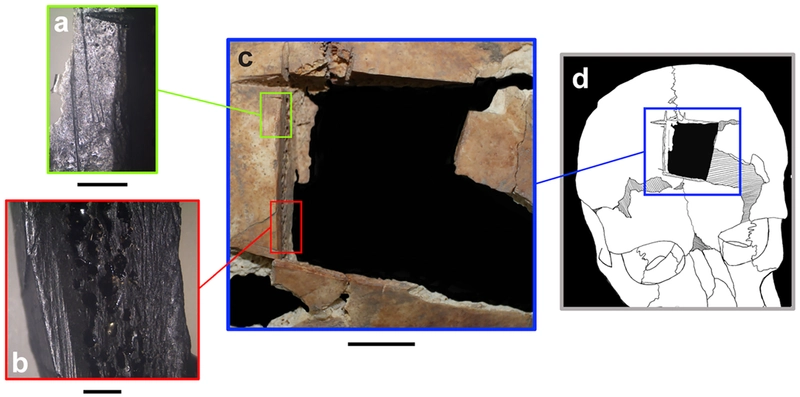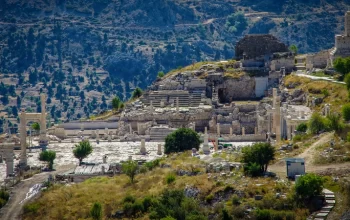
A Bronze Age human skull unearthed during an excavation in northern Israel may indicate a failed brain surgery.
Archaeologists had previously said they had unearthed the skeletal remains of two separate individuals and some grave goods in a tomb in the ancient city of Megiddo. However, the research paper on the subject was published in PLOS One on Wednesday, February 22, 2023.1
Megiddo
It is an ancient city located approximately 128 kilometers (80 miles) north of Jerusalem. Due to its strategic location, it was one of the important cities in the Levant during the Bronze Age and Iron Age.
The first thing that caught the attention of the archaeologists who made the discovery was the hole in one of the skulls. The hole in the cranial bone measures approximately 31 x 32 mm (1.18 x 1.22 in).

Photo: Kalisher et al., 2023, PLOS ONE ©️CC-BY 4.0
Rachel Kalisher, lead author of the article, says therapeutic trepanation was practiced for one of the deceased.
Trepanation
It is a surgical procedure in which holes are made in the skull, also known as trepannin and trephination and trephining. It is known that it has been practiced for various purposes since the Neolithic Age. The purpose of surgical intervention may be therapeutic or ritualistic.
In the eastern Mediterranean, the number of skulls in which trepanation has been practiced is few, although it is common in some regions. According to the article, the skull found at Megiddo and dated between 1550 BC and 1450 BC, is the oldest sample ever found in and around the Levant. This is one of the reasons why this discovery is so important from an archaeological and anthropological point of view.
DNA analyzes of the organic remains indicate that those in the tomb were most likely brothers. According to the article, the younger brother is in his late teens or early twenties, and the older one is between 21 and 46 years old.
Kalisher says the brothers are of high social status, perhaps of royal lineage. According to Kalisher, the valuable grave goods in the tomb, the practice of trepanation, and the brothers’ ability to resist infectious diseases for a long time indicate this.
The study states that both brothers had signs of iron deficiency anemia, some skeletal abnormalities, various lesions, and signs of inflammation. It is also underlined that the older brother has an extra molar.

Photo: Kalisher et al., 2023, PLOS ONE ©️CC-BY 4.0
According to the study, both brothers had struggled with the disease for a long time before they died. Although scientists suspect that brothers had leprosy or tuberculosis, more research is needed to make a definitive diagnosis.
Against all this, it is not known for which disease the trepanation was practiced for the elder brother. However, it seems that after the skull was drilled and excised, there was no improvement in the cranial bone. This means that the older brother died a few days, perhaps even hours, after the trepanation.
Brain Surgery or Ritual?
It is known that trepanation has been practiced for both therapeutic and ritualistic purposes since the Neolithic Age.
However, according to the study, the older brother’s skull was drilled before he died. Because, apparently, care was taken not to puncture the membrane called the dura mater. Additionally, the color of the opening’s margins suggests that the skull was drilled while the man was alive.
- Kalisher R, Cradic MS, Adams MJ, Martin MAS, Finkelstein I (2023) Cranial trephination and infectious disease in the Eastern Mediterranean: The evidence from two elite brothers from Late Bronze Megiddo, Israel. PLoS ONE 18(2): e0281020.[↩]





